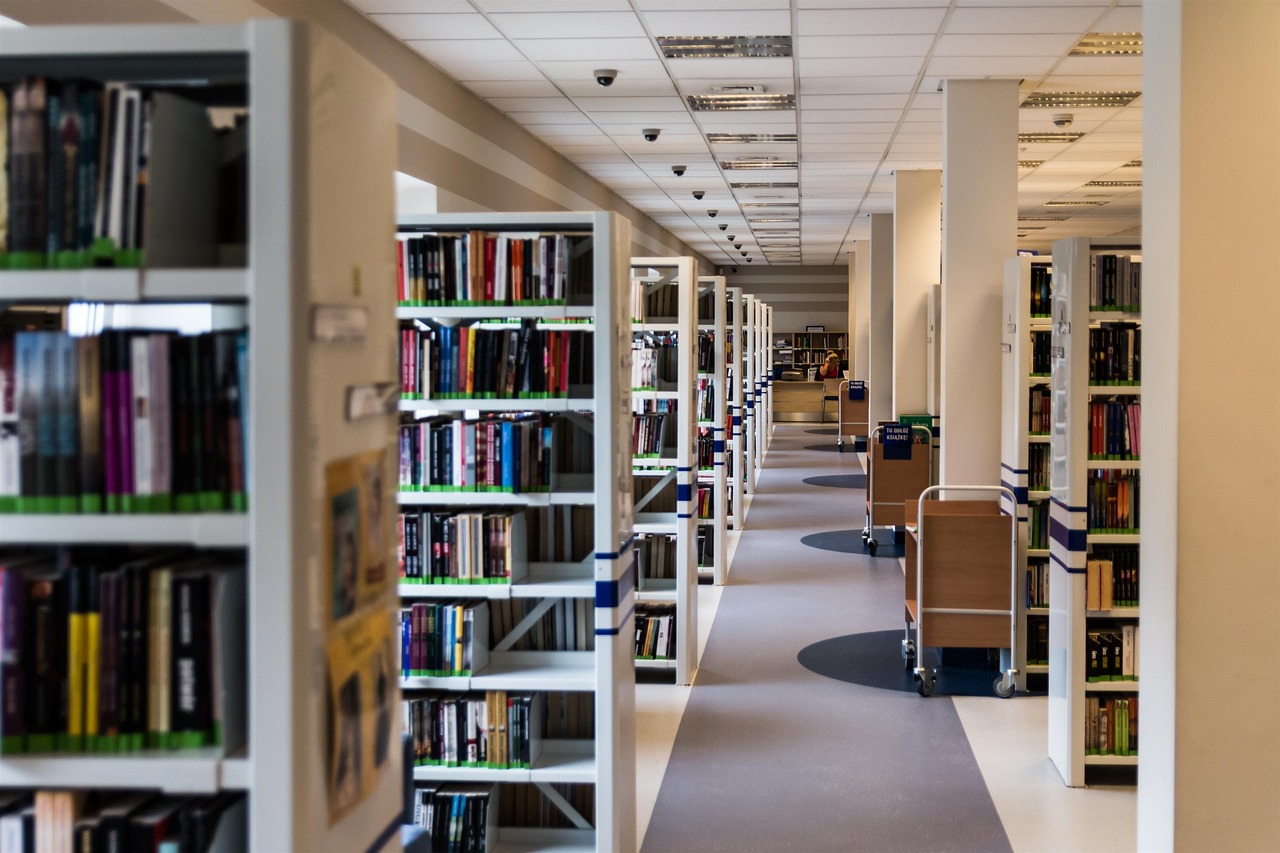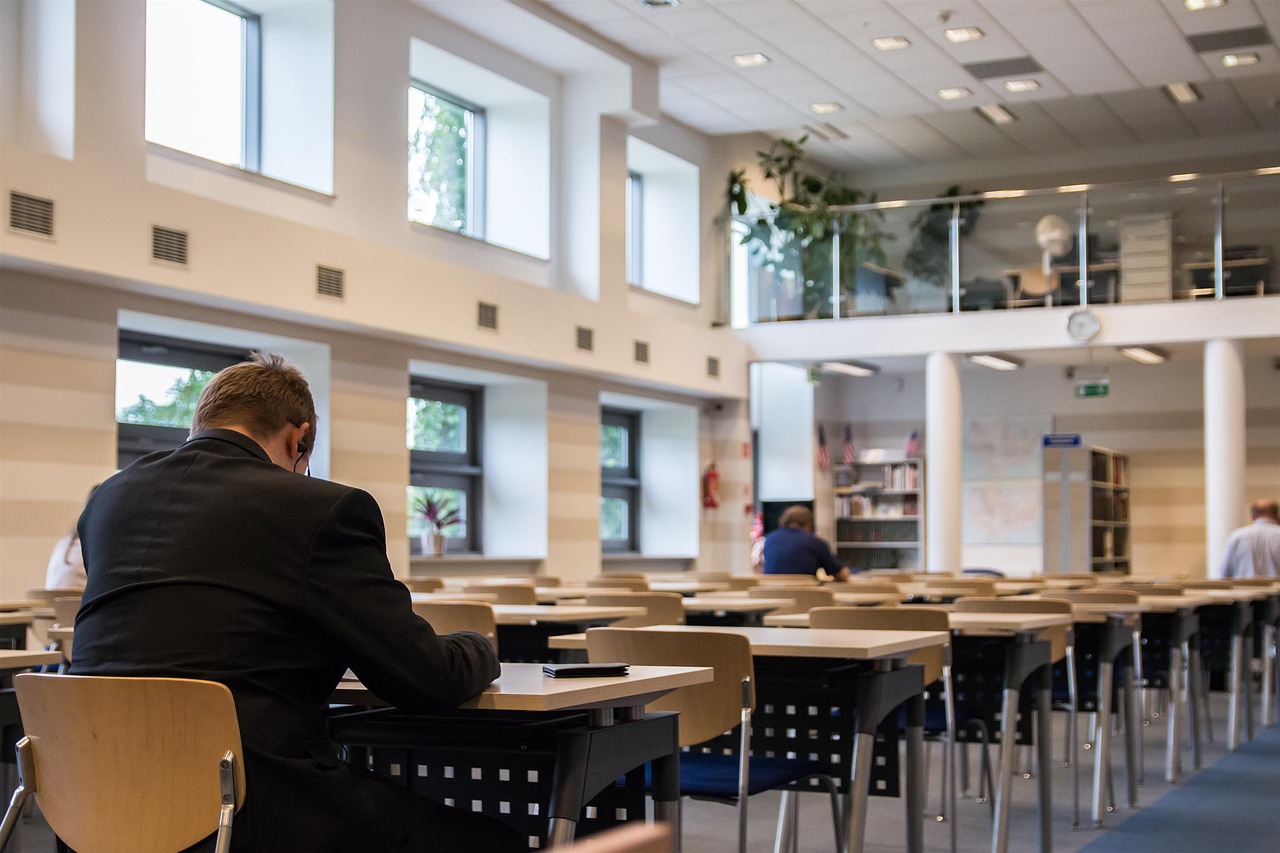Understanding the Role of Resilience in Education
In today's fast-paced world, resilience has emerged as a cornerstone of successful education. But what exactly does resilience mean in this context? It’s more than just bouncing back from setbacks; it’s about thriving in the face of challenges. This article explores the importance of resilience in education, highlighting its impact on student success, teaching strategies, and the overall learning environment. We will delve into various aspects of resilience and its practical applications, helping educators and students alike understand how to foster this essential quality.
Resilience plays a crucial role in the learning process, acting as a buffer against the inevitable challenges that students face. Imagine resilience as a sturdy bridge that enables students to cross turbulent waters of academic difficulties. Without it, they may find themselves stranded on the shore of frustration and defeat. By fostering resilience, we help students develop a growth mindset, which is the belief that abilities and intelligence can be developed through dedication and hard work. This mindset enhances academic performance and encourages students to embrace challenges rather than shy away from them.
So, how can teachers cultivate resilience in their students? There are several effective strategies that can be implemented in the classroom. By integrating these methods, educators can create an environment where students feel supported and empowered to tackle challenges head-on. Here are a few strategies:
- Positive Reinforcement: Recognizing and rewarding effort can boost a student's confidence and willingness to persevere.
- Goal Setting: Helping students set achievable goals fosters a sense of purpose and direction.
- Supportive Classroom Environment: A classroom that encourages open communication and emotional safety promotes resilience.
Utilizing positive reinforcement can significantly boost student confidence and resilience. Think of it as planting seeds of encouragement that can grow into strong trees of self-efficacy. Educators can adopt various techniques to encourage perseverance among learners. For instance, acknowledging small victories, providing constructive feedback, and celebrating progress can create a positive feedback loop that motivates students to keep pushing forward.
Incorporating praise and rewards into the learning process can motivate students to face challenges. When students feel recognized for their hard work, they are more likely to engage in the learning process. This acknowledgment acts as fuel, driving them to take on new challenges with enthusiasm. Imagine a student who struggles with math; a simple word of encouragement or a small reward for improvement can spark a newfound determination to conquer the subject.
A safe learning environment is essential for fostering resilience. When students feel emotionally secure, they are more likely to take risks, ask questions, and express their thoughts. This emotional safety encourages them to step out of their comfort zones, which is crucial for developing resilience. Teachers can create such an environment by promoting inclusivity, encouraging collaboration, and establishing clear expectations for behavior.
Promoting a growth mindset is vital for student resilience. Educators can teach students to view challenges as opportunities for growth and learning. Instead of saying, "I can't do this," students can learn to say, "I can't do this yet." This shift in perspective is powerful, as it transforms obstacles into stepping stones. By integrating this mindset into daily lessons, teachers can inspire students to embrace challenges and persist through difficulties.
Educators play a pivotal role in nurturing resilience among students. They are not just instructors; they are mentors, guides, and supporters. Their responsibilities extend beyond academic teaching; they shape the emotional and psychological landscapes of their classrooms. By modeling resilience themselves, educators can influence students to adopt similar attitudes and coping skills.
Establishing mentorship and support systems is essential for building resilience. Strong teacher-student relationships can provide students with the emotional support they need to navigate challenges. When students know they have someone in their corner, they are more likely to take risks and face difficulties head-on. This connection fosters a sense of belonging and encourages students to seek help when needed.
Continuous professional development equips educators with tools to support student resilience effectively. Workshops, training sessions, and collaborative learning opportunities can provide teachers with the latest strategies for fostering resilience in their classrooms. By investing in their own growth, educators can better support their students in developing this essential quality.
Understanding how to measure resilience is critical for assessing its impact on education. Various metrics and tools can be used to evaluate student resilience and outcomes. These may include surveys, observational assessments, and academic performance indicators. By measuring resilience, educators can identify areas for improvement and tailor their strategies to better support students.
What is resilience in education?
Resilience in education refers to the ability of students to overcome challenges and setbacks, fostering a growth mindset and enhancing their overall learning experience.
How can teachers promote resilience in their classrooms?
Teachers can promote resilience by implementing positive reinforcement, creating a safe learning environment, encouraging a growth mindset, and establishing strong mentor relationships.
Why is a growth mindset important for student resilience?
A growth mindset encourages students to view challenges as opportunities for growth, which helps them develop persistence and resilience in overcoming obstacles.

The Importance of Resilience in Learning
Resilience is not just a buzzword; it's a vital component of the learning process. Imagine a student facing a difficult math problem. Instead of throwing in the towel, a resilient student views this challenge as an opportunity to learn and grow. This shift in perspective is what sets resilient learners apart. They understand that setbacks are a natural part of education, and they embrace them as stepping stones rather than stumbling blocks. In fact, studies have shown that resilience can significantly enhance academic performance, leading to better grades and a more profound understanding of the material.
Moreover, resilience fosters a growth mindset. This concept, popularized by psychologist Carol Dweck, emphasizes the belief that abilities and intelligence can be developed through dedication and hard work. When students adopt a growth mindset, they are more likely to take risks, engage deeply with their studies, and persist in the face of challenges. For instance, when a student receives constructive criticism on an essay, a resilient learner will use that feedback to improve, rather than feel discouraged. This proactive approach not only boosts academic success but also prepares students for life's inevitable ups and downs.
To illustrate the importance of resilience, consider the following key benefits:
- Improved Academic Performance: Resilient students are more likely to achieve higher grades and perform better on assessments.
- Enhanced Problem-Solving Skills: They develop better critical thinking abilities, allowing them to tackle complex problems effectively.
- Emotional Well-Being: Resilience contributes to reduced anxiety and stress, fostering a healthier learning environment.
In a world that is constantly changing, the ability to bounce back from setbacks is more important than ever. Resilience equips students with the tools they need to navigate challenges, not just in school but throughout their lives. Educators who recognize the importance of resilience can create a more supportive and effective learning environment, where students feel empowered to take risks and learn from their mistakes. In essence, resilience is the backbone of a successful educational experience, shaping not only how students learn but also how they approach life beyond the classroom.
Q: What is resilience in the context of education?
A: Resilience in education refers to the ability of students to cope with challenges, adapt to setbacks, and continue striving for success despite difficulties.
Q: How can resilience impact academic performance?
A: Resilient students tend to have better academic outcomes because they are more likely to view challenges as opportunities for growth and are less likely to give up when faced with difficulties.
Q: What role do educators play in fostering resilience?
A: Educators can nurture resilience by creating a supportive learning environment, implementing positive reinforcement strategies, and encouraging a growth mindset among students.

Strategies for Building Resilience in Students
Building resilience in students is not just a nice-to-have; it’s an essential part of their educational journey. Think of resilience as a muscle—the more you exercise it, the stronger it gets. So, how can educators help students flex this muscle? Here are some effective strategies that can be implemented in the classroom.
First off, positive reinforcement is a game-changer. When students receive recognition for their efforts, no matter how small, it boosts their confidence and encourages them to keep pushing through challenges. Imagine a student who struggles with math. If a teacher acknowledges their hard work, even if they didn’t get the right answer, that student is likely to feel more motivated to tackle the next problem. This creates a cycle of positivity that nurtures resilience.
Incorporating praise and rewards into the learning process is another powerful strategy. It’s like giving students a pat on the back for their efforts. For instance, a teacher might set up a reward system where students earn points for completing tasks or showing perseverance. These points can be traded for small rewards, creating an environment where effort is celebrated. This not only motivates students but also teaches them that hard work pays off.
Next, we have the importance of creating a safe learning environment. When students feel emotionally safe, they are more likely to take risks and step out of their comfort zones. This is crucial for resilience because, without the willingness to face challenges, growth cannot occur. Teachers can foster this environment by establishing clear rules, encouraging open communication, and showing empathy towards students’ struggles. A classroom where students feel valued and understood is a breeding ground for resilience.
Another effective strategy is to encourage a growth mindset among students. This means teaching them to view challenges as opportunities for growth rather than insurmountable obstacles. Educators can introduce concepts from Carol Dweck's research on growth mindset, helping students understand that effort and persistence lead to improvement. For example, teachers can share stories of famous individuals who overcame failures to achieve success, reinforcing the idea that setbacks are just stepping stones to greatness.
Finally, it’s important to incorporate goal-setting into the learning process. When students set achievable goals, they learn to break down larger tasks into manageable steps. This not only makes the tasks less daunting but also gives students a sense of accomplishment as they reach each milestone. Teachers can guide students in setting SMART (Specific, Measurable, Achievable, Relevant, Time-bound) goals, which can lead to increased motivation and resilience.
By employing these strategies—positive reinforcement, creating a safe environment, fostering a growth mindset, and encouraging goal-setting—educators can play a pivotal role in building resilience in their students. The ripple effect of these practices not only enhances academic performance but also prepares students for life's inevitable challenges.
- What is resilience in education? Resilience in education refers to the ability of students to bounce back from setbacks and challenges, maintaining a positive attitude towards learning.
- Why is resilience important for students? Resilience helps students cope with academic pressures, enhances their problem-solving skills, and fosters a lifelong love for learning.
- How can parents support their child's resilience? Parents can support resilience by encouraging independence, providing emotional support, and reinforcing the importance of effort and perseverance.

Positive Reinforcement Techniques
Positive reinforcement is like a secret ingredient in the recipe for student success. It’s that little nudge that can turn a hesitant learner into a confident achiever. When educators employ positive reinforcement techniques, they create an environment where students feel valued and motivated to tackle challenges head-on. Imagine a classroom where every effort is recognized, where mistakes are seen as stepping stones rather than stumbling blocks. This is the essence of positive reinforcement.
One of the most effective ways to implement positive reinforcement is through specific praise. Instead of saying “Good job,” teachers can say, “I really appreciate how you worked through that difficult problem. Your effort shows that you’re learning!” This not only boosts the student’s confidence but also reinforces the behavior that led to the success. It’s essential to make the praise specific; it’s like giving a student a map that shows them exactly what path to take next time.
Another powerful technique is the use of reward systems. These can range from simple verbal acknowledgment to more structured systems like point charts or sticker rewards. For instance, a teacher might create a chart where students earn points for completing homework on time or helping a classmate. Once they reach a certain number of points, they can choose a reward, like extra recess time or a homework pass. This not only encourages perseverance but also fosters a sense of community as students often cheer each other on to reach their goals.
Moreover, it’s crucial to create an atmosphere where students feel safe to express themselves and take risks. When students know that their efforts will be met with understanding and support, they are more likely to try new things and push their boundaries. This is where the magic of positive reinforcement truly shines. It transforms the classroom from a place of fear and anxiety into a sanctuary of growth and learning.
To illustrate, let’s take a look at the following table that summarizes some effective positive reinforcement techniques and their benefits:
| Technique | Description | Benefits |
|---|---|---|
| Specific Praise | Praising specific actions or behaviors rather than general statements. | Builds confidence and reinforces desired behaviors. |
| Reward Systems | Implementing a points or sticker system for achieving certain goals. | Encourages motivation and fosters a sense of achievement. |
| Peer Recognition | Encouraging students to acknowledge each other’s efforts. | Builds a supportive classroom community and enhances social skills. |
In conclusion, positive reinforcement techniques are not just about giving compliments; they are about creating a culture of resilience and growth. By recognizing and rewarding students’ efforts, teachers set the stage for a learning environment where students feel empowered to take risks and embrace challenges. It’s like planting seeds of confidence that can grow into a sturdy tree of resilience, capable of weathering any storm.
Incorporating these techniques into daily teaching practices can have a profound impact on students' overall learning experience. So, the next time you see a student struggling, remember that a little positivity can go a long way!

Incorporating Praise and Rewards
Praise and rewards are not just simple tools in an educator's toolkit; they are the vital ingredients that can transform a student's educational experience. Imagine walking into a classroom where every student feels valued and recognized for their efforts—it's like a garden where every flower blooms beautifully. When teachers incorporate praise into their daily interactions, they create an atmosphere where students feel safe to take risks and embrace challenges. This practice is essential for building resilience because it fosters a sense of belonging and self-worth.
To effectively incorporate praise and rewards, educators can adopt various techniques. Acknowledging small achievements can be just as impactful as celebrating large milestones. For instance, when a student struggles with a difficult math problem but persists until they find the solution, a simple acknowledgment like, "I noticed how hard you worked on that problem, and I'm proud of you!" can work wonders. This kind of recognition not only boosts confidence but also reinforces the idea that effort matters, which is crucial for developing resilience.
Moreover, rewards can take many forms. They don't always have to be tangible items like stickers or treats; sometimes, the best reward is verbal praise or a note home to parents highlighting the student's progress. By varying the types of rewards, teachers can keep the motivation high and cater to the diverse preferences of their students. Consider the following types of rewards:
- Verbal Praise: Simple affirmations that boost confidence.
- Certificates: Recognizing achievements in a formal manner.
- Classroom Privileges: Allowing students to lead a group activity or choose the next topic.
Incorporating praise and rewards also helps students internalize their successes. When students hear positive feedback, they begin to associate their hard work with positive outcomes, which reinforces their belief in their abilities. This cycle of feedback and reward is crucial for nurturing a resilient mindset. It's like planting seeds of confidence that will grow and flourish over time.
Furthermore, creating a culture of recognition in the classroom encourages peer support. When students celebrate each other's successes, they learn to appreciate collaboration and teamwork. This sense of community can significantly enhance resilience as students realize they are not alone in their struggles. They learn to lean on one another, share experiences, and motivate each other to keep pushing through challenges.
In conclusion, incorporating praise and rewards into educational practices is not just about making students feel good; it's about laying the groundwork for resilience. By recognizing effort and celebrating achievements, educators can instill a sense of self-efficacy in their students. This approach not only enhances academic performance but also prepares students for the inevitable challenges they will face in their educational journeys and beyond.
Q1: How does praise influence student resilience?
A1: Praise reinforces students' belief in their abilities, encouraging them to tackle challenges and persist through difficulties, which is essential for building resilience.
Q2: What types of rewards are most effective in the classroom?
A2: Effective rewards can vary from verbal praise and certificates to classroom privileges. The key is to tailor rewards to individual student preferences to maintain motivation.
Q3: Can too much praise be counterproductive?
A3: Yes, excessive or insincere praise can lead to students becoming reliant on external validation. It's important to provide genuine and specific feedback that encourages intrinsic motivation.

Creating a Safe Learning Environment
Creating a safe learning environment is fundamental to nurturing resilience in students. Imagine a garden where flowers bloom; they need the right conditions to thrive—sunlight, water, and protection from harsh winds. Similarly, students flourish when they feel secure, valued, and supported. When educators establish a classroom atmosphere that prioritizes emotional safety, students are more likely to take risks, express themselves, and embrace challenges without the fear of failure. This sense of security allows them to focus on learning rather than worrying about judgment or criticism.
One of the key components of a safe learning environment is the establishment of **trust**. Students need to know that their thoughts and feelings are respected. This can be achieved through open communication, where teachers actively listen to their students and encourage them to voice their concerns. When students feel heard, it fosters a sense of belonging, which is essential for developing resilience. A classroom where students feel comfortable sharing their ideas and asking questions is like a warm blanket on a chilly day—reassuring and comforting.
Additionally, implementing clear expectations and consistent routines can significantly contribute to a safe environment. When students understand what is expected of them, they can navigate their learning journey with confidence. For instance, establishing classroom rules collaboratively can empower students, making them feel like they have a stake in their learning environment. This not only enhances their sense of ownership but also encourages them to take responsibility for their actions, which is a vital aspect of resilience.
Moreover, fostering a culture of respect and inclusivity is crucial. Teachers should encourage students to appreciate diversity and celebrate differences. This can be achieved through various activities that promote teamwork and collaboration. For example, group projects that require students to work together can help build relationships and understanding among peers. When students learn to support one another, they develop a sense of community that strengthens their resilience. After all, a strong support system can act as a safety net, catching them when they stumble.
Lastly, it’s important to recognize that resilience is not just about bouncing back from failure; it’s also about learning how to navigate challenges effectively. Educators can incorporate social-emotional learning (SEL) into their curriculum to equip students with the tools they need to manage stress, regulate emotions, and build healthy relationships. By teaching students coping strategies and problem-solving skills, teachers are not only preparing them for academic success but also for life's inevitable ups and downs.
| Key Elements of a Safe Learning Environment | Description |
|---|---|
| Trust | Creating an atmosphere where students feel comfortable sharing their thoughts and feelings. |
| Clear Expectations | Establishing classroom rules and routines to provide structure and predictability. |
| Respect and Inclusivity | Encouraging appreciation for diversity and fostering teamwork among students. |
| Social-Emotional Learning | Teaching students coping strategies and problem-solving skills to navigate challenges. |

Encouraging a Growth Mindset
Encouraging a growth mindset in students is not just beneficial; it’s essential for their development and success. A growth mindset is the belief that abilities and intelligence can be developed through dedication and hard work. This perspective fosters a love for learning and resilience, which are key components for achieving long-term goals. So, how can educators embed this mindset into their teaching practices? It’s simpler than you might think!
First, it's important to create an environment where mistakes are viewed as opportunities for learning rather than failures. When students understand that their brain is like a muscle that grows stronger with effort, they become more willing to take risks. For example, when a student struggles with a math problem, instead of simply giving up, they might ask, “What can I learn from this challenge?” This shift in questioning is a powerful way to cultivate resilience.
To further encourage a growth mindset, educators can incorporate specific language into their feedback. Instead of saying, “You’re so smart,” a teacher might say, “I can see you worked really hard on this!” This subtle change emphasizes the process of learning rather than the outcome, promoting the idea that effort leads to improvement. Additionally, sharing stories of famous figures who faced failures but persevered can inspire students to adopt a similar attitude. Think of Thomas Edison, who famously said, “I have not failed. I've just found 10,000 ways that won't work.” This kind of narrative can ignite a spark in students, showing them that persistence is often the key to success.
Another effective strategy is to integrate goal-setting activities into the curriculum. By encouraging students to set realistic, achievable goals, they can track their progress over time. This not only helps them see how they’ve improved but also reinforces the idea that effort leads to growth. For instance, a classroom could implement a “goal wall” where students post their objectives and celebrate their achievements together. This visual representation of progress can be incredibly motivating.
Finally, it’s crucial to foster a supportive classroom culture where students feel safe to express their thoughts and feelings. When students know they have a support system, they are more likely to take the necessary risks to grow. Teachers can facilitate group discussions where students share their challenges and strategies for overcoming them. This collaborative approach not only builds community but also reinforces the idea that everyone struggles and that it's okay to ask for help.
In conclusion, encouraging a growth mindset is a multifaceted approach that involves changing the language we use, integrating goal-setting practices, and fostering a supportive classroom environment. By instilling this mindset in students, we equip them with the tools they need to navigate challenges, embrace learning, and ultimately succeed in their educational journeys.
- What is a growth mindset? A growth mindset is the belief that abilities and intelligence can be developed through dedication and hard work.
- How can teachers promote a growth mindset? Teachers can promote a growth mindset by using positive reinforcement, emphasizing effort over results, and creating a supportive classroom environment.
- Why is resilience important in education? Resilience helps students overcome challenges, learn from failures, and ultimately achieve their academic and personal goals.

The Role of Educators in Fostering Resilience
Educators are not just knowledge dispensers; they are the architects of resilience in their classrooms. The role they play in nurturing this essential quality among students cannot be overstated. Think of educators as gardeners, cultivating the fertile soil where resilience can take root and flourish. By creating an environment that encourages growth, they help students navigate the ups and downs of their educational journey.
One of the most significant responsibilities educators have is to establish strong, trusting relationships with their students. These connections serve as a safety net, allowing students to feel secure enough to take risks and make mistakes. When students know they have the unwavering support of their teachers, they are more likely to engage in challenging tasks and push their boundaries. This kind of emotional safety is crucial for developing resilience, as it empowers students to confront difficulties head-on rather than shy away from them.
Moreover, educators can foster resilience by incorporating mentorship and support systems within the educational framework. This can manifest in various forms, such as peer mentoring programs, where older students guide younger ones, or teacher-led support groups that address emotional and academic challenges. Such initiatives not only build a sense of community but also reinforce the idea that seeking help is a sign of strength, not weakness.
In addition to mentorship, professional development plays a pivotal role in equipping educators with the necessary tools to support resilience effectively. Continuous training in resilience-building strategies ensures that teachers are well-prepared to address the diverse needs of their students. Whether it's through workshops, seminars, or collaborative learning sessions, ongoing education helps teachers stay informed about the latest research and best practices in fostering resilience.
To illustrate the impact of these strategies, consider the following table, which outlines key responsibilities of educators in promoting resilience:
| Key Responsibilities | Description |
|---|---|
| Building Trust | Create a safe and supportive environment where students feel valued and respected. |
| Mentorship | Establish mentorship programs that connect students with peers and teachers for guidance. |
| Professional Development | Engage in continuous training to learn effective resilience-building strategies. |
| Encouraging Reflection | Guide students in reflecting on their experiences to foster self-awareness and growth. |
Ultimately, the role of educators in fostering resilience is multi-faceted and dynamic. By actively engaging with their students and implementing supportive strategies, they can help cultivate a generation of learners who are not only academically successful but also emotionally resilient. This dual focus on knowledge and character development prepares students to face life's challenges with courage and confidence, making them better equipped for the future.
- What is resilience in education?
Resilience in education refers to the ability of students to cope with challenges, setbacks, and stressors in their learning journey. It involves developing a mindset that embraces growth and learning from failures. - How can teachers promote resilience?
Teachers can promote resilience by building trusting relationships, providing mentorship, encouraging a growth mindset, and engaging in professional development to learn effective strategies. - Why is a safe learning environment important?
A safe learning environment allows students to take risks without fear of judgment, which is essential for developing resilience. It fosters emotional safety, enabling students to learn from their mistakes.

Mentorship and Support Systems
In the realm of education, the significance of cannot be overstated. Think of mentorship as a lighthouse guiding students through the foggy waters of academic challenges. When students have access to mentors—be it teachers, older peers, or community members—they are more likely to navigate obstacles with confidence and resilience. Mentorship provides a framework where students feel supported, understood, and empowered to tackle difficulties head-on.
One of the key components of an effective mentorship program is the establishment of strong relationships. These relationships are built on trust, respect, and open communication. When students feel that their mentors genuinely care about their success, they are more inclined to share their struggles and seek help. This creates a safe space for vulnerability, allowing students to express their fears and uncertainties without the fear of judgment. As a result, they can develop coping strategies and resilience that will serve them well beyond the classroom.
Moreover, mentorship can take various forms, which can be tailored to meet the diverse needs of students. For instance, one-on-one mentoring sessions can provide personalized guidance, while group mentoring can foster a sense of community and shared experiences. Here are some common types of mentorship that can be implemented in schools:
- Peer Mentoring: Older students mentor younger ones, offering advice and support based on their own experiences.
- Teacher Mentoring: Educators provide guidance and encouragement, helping students set and achieve academic goals.
- Community Mentoring: Local professionals or volunteers mentor students, exposing them to various career paths and life skills.
Support systems play a crucial role alongside mentorship. These systems can include academic resources, counseling services, and extracurricular programs that promote social and emotional well-being. By integrating these resources, schools can create a holistic support network that addresses both academic and personal challenges. For example, a student struggling with math might benefit from a tutoring program while also receiving emotional support from a school counselor.
In conclusion, the combination of mentorship and robust support systems creates a nurturing environment where students can thrive. By fostering these relationships and resources, educators can help students build resilience, ultimately leading to improved academic performance and personal growth. As we continue to explore the role of resilience in education, it’s clear that mentorship and support systems are vital cogs in the wheel of student success.
- What is the role of mentorship in education?
Mentorship provides guidance, support, and encouragement to students, helping them navigate challenges and build resilience. - How can schools implement effective mentorship programs?
Schools can establish mentorship programs by pairing students with mentors, providing training for mentors, and ensuring open lines of communication. - What are some benefits of support systems in schools?
Support systems help address both academic and emotional needs, promoting a well-rounded approach to education and enhancing student resilience.

Professional Development for Educators
Professional development for educators is not just a buzzword; it’s a vital component in the journey to foster resilience in students. Imagine a garden—without the right nutrients, sunlight, and care, plants struggle to grow. Similarly, teachers need ongoing training and support to cultivate an enriching learning environment that nurtures resilience. Professional development equips educators with the tools they need to help students navigate challenges and setbacks effectively.
One of the key aspects of professional development is the focus on resilience-building strategies. Workshops and training sessions can introduce teachers to innovative methods that promote a positive classroom atmosphere. For instance, educators can learn about the importance of emotional intelligence and how to integrate it into their teaching practices. This not only enhances their ability to connect with students but also models resilience in action.
Furthermore, professional development often includes collaboration with colleagues. When teachers come together to share experiences and strategies, they create a support network that can be incredibly beneficial. This collaborative approach fosters a sense of community and encourages educators to experiment with new techniques without the fear of failure. After all, just as we encourage students to embrace challenges, educators should also be given the space to grow and learn.
In addition, ongoing professional development programs can focus on cultural competence. Understanding the diverse backgrounds of students allows educators to tailor their approaches, ensuring that every student feels valued and understood. This is crucial for building resilience, as students are more likely to thrive in an environment where they feel safe and supported. When educators are equipped with the knowledge to address the unique needs of their students, they can effectively foster resilience in ways that resonate with each individual learner.
To illustrate the impact of professional development, consider this table that outlines key areas of focus:
| Area of Focus | Description |
|---|---|
| Resilience Strategies | Training on techniques that promote perseverance and coping skills. |
| Emotional Intelligence | Workshops on understanding and managing emotions in the classroom. |
| Cultural Competence | Sessions aimed at understanding and addressing diverse student needs. |
| Collaborative Learning | Opportunities for educators to share experiences and best practices. |
Ultimately, investing in professional development is investing in the future of education. By equipping educators with the necessary skills and knowledge, schools can create a ripple effect that enhances student resilience. When teachers feel confident and supported, they can pass that energy onto their students, creating a thriving learning environment where challenges are met with determination and growth.
In conclusion, the role of professional development in education cannot be overstated. It is a continuous journey that empowers educators to adapt, innovate, and inspire resilience in their students. As we cultivate this culture of learning and growth, we pave the way for future generations to not only face challenges but to embrace them as opportunities for success.
- What is resilience in education? Resilience in education refers to the ability of students to overcome challenges and setbacks while maintaining a positive attitude towards learning.
- How can teachers foster resilience in students? Teachers can foster resilience through positive reinforcement, creating a safe learning environment, and encouraging a growth mindset.
- Why is professional development important for educators? Professional development is crucial as it equips educators with the latest strategies and tools to support student resilience effectively.
- What are some effective professional development strategies? Effective strategies include workshops, collaborative learning sessions, and training focused on emotional intelligence and cultural competence.

Measuring Resilience in Education
Understanding how to measure resilience in education is crucial for assessing its impact on student outcomes and overall academic success. Resilience isn't just a buzzword; it's a vital component that helps students bounce back from setbacks and challenges. But how do we quantify something as abstract as resilience? The answer lies in a combination of qualitative and quantitative metrics that provide a comprehensive view of a student's resilience.
One of the most effective ways to gauge resilience is through self-report surveys. These surveys often include questions designed to assess a student's ability to cope with stress, their optimism levels, and their problem-solving skills. For example, a survey might ask students to rate their agreement with statements like:
- "I can handle challenges that come my way."
- "I believe I can improve my skills with effort."
- "When I face difficulties, I look for solutions."
Additionally, educators can utilize observational assessments. Teachers can monitor students' behavior in the classroom, noting how they respond to challenges, their willingness to seek help, and their persistence in the face of difficulties. This method provides a more nuanced understanding of resilience, as it captures real-time reactions and coping strategies that students employ during stressful situations.
Another valuable approach is the implementation of resilience scales. These scales are standardized tools that measure various aspects of resilience, such as emotional regulation, social support, and adaptive coping strategies. Some popular resilience scales include:
| Resilience Scale | Description |
|---|---|
| Connor-Davidson Resilience Scale (CD-RISC) | A widely used scale that assesses resilience across various contexts. |
| Brief Resilience Scale (BRS) | Focuses specifically on the ability to bounce back from stress. |
| Resilience Questionnaire (RQ) | Evaluates emotional and psychological resilience in students. |
Moreover, measuring resilience isn't just about numbers and scores. It’s essential to incorporate qualitative feedback from students, teachers, and parents. Conducting interviews or focus groups can provide deeper insights into how resilience manifests in students' lives. For instance, a student might share a story about overcoming a significant challenge, illustrating their resilience in a way that a survey might not capture.
Lastly, schools can track academic performance over time as an indirect measure of resilience. Students who demonstrate resilience often show improved grades, attendance, and participation in extracurricular activities. By analyzing these metrics, educators can identify trends that indicate a student's resilience journey and make informed decisions about interventions and support systems.
Q: Why is measuring resilience important in education?
A: Measuring resilience helps educators understand how well students cope with challenges, which can inform teaching strategies and support systems.
Q: What tools are available for measuring resilience?
A: Tools like self-report surveys, observational assessments, resilience scales, and qualitative feedback from stakeholders are commonly used.
Q: How can resilience impact academic performance?
A: Resilient students are more likely to persist in the face of challenges, leading to improved academic outcomes and a positive learning experience.
Frequently Asked Questions
-
What is resilience in education?
Resilience in education refers to the ability of students to bounce back from setbacks, adapt to challenges, and maintain a positive attitude toward learning. It's about developing a mindset that views obstacles as opportunities for growth rather than insurmountable barriers.
-
Why is resilience important for students?
Resilience is crucial for students as it helps them navigate academic challenges, enhances their problem-solving skills, and fosters a growth mindset. When students are resilient, they are more likely to persevere through difficulties, leading to improved academic performance and overall well-being.
-
How can teachers build resilience in their students?
Teachers can build resilience by implementing various strategies such as positive reinforcement, goal setting, and creating a supportive classroom environment. By encouraging students to take risks and learn from failures, educators can help them develop a stronger sense of self-efficacy.
-
What role does a safe learning environment play in fostering resilience?
A safe learning environment is essential for fostering resilience as it allows students to feel emotionally secure and supported. When students know they can express themselves without fear of judgment, they are more likely to take risks and engage fully in their learning process.
-
What is a growth mindset and how does it relate to resilience?
A growth mindset is the belief that abilities and intelligence can be developed through dedication and hard work. This mindset is closely related to resilience, as it encourages students to view challenges as opportunities to learn and grow, rather than as threats to their self-worth.
-
How can mentorship support student resilience?
Mentorship provides students with guidance, encouragement, and a sense of belonging. Strong teacher-student relationships can significantly enhance resilience by offering emotional support and helping students navigate through personal and academic challenges.
-
What tools are available to measure resilience in education?
There are various tools and metrics available to measure resilience in education, including surveys, assessments, and observational methods. These tools can help educators evaluate student resilience and identify areas for improvement in teaching strategies.



















